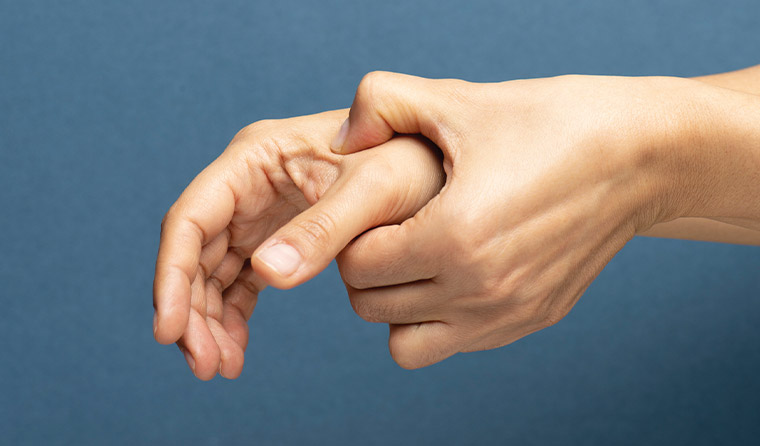In this post I discuss how I resolved my hand pain by moving my shoulder, and what we can learn from this.

Here’s a fun story for you.
I woke up the other morning with searing pain in my hand. I was unable to make a fist and I’d more or less lost the function of my thumb.
That meant I couldn’t pick up a cup with my right hand to drink coffee.
My sense of alarm increased.
But it gets worse. As you can imagine, having a useless hand is not ideal in my line of work. Not least because it makes me look like somewhat of an amateur.
‘Yes this exercise will help your shoulder feel better. Now please pass me that dumbbell as I can’t move my hand.’
Do you see what I mean?
After struggling through a number of sessions, I got some time to check myself over.
The limitations at my hand were obvious, but I also found limits at my forearm (pronation) and further up at my shoulder (internal rotation).
I set about restoring these motions with some gentle exercises.
Within minutes, I could move my hand, and in particular my thumb, with less pain.
Encouraged I continued. By the afternoon I could pick up a coffee cup with relative ease (praise be), use my thumb to type messages, and even shift a couple of dumbbells around.
Two days later the pain was completely gone.
So what can we learn from this peculiar episode?
Pain doesn’t necessarily equal damage
I recalled my previous training session. I remember pushing a little harder on a couple of exercises but felt nothing at the time.
I checked my thumb for signs of bruising but there was nothing. I concluded that despite the pain, there was unlikely to be any serious damage.
Sometimes the site of pain isn’t where the problem is
I played around with my hand on the way to work but nothing helped. It was only when I looked more broadly at limitations further up my arm and into my shoulder that things started to improve.
Movement is medicine
Figuring out what’s not moving well and improving those limits with gentle, focused exercise can work wonders.
Picture the alternative: rest, ice, heat, stretching, massage. Would any of these approaches restored function in my hand so quickly? I doubt it.
Now picture what happens when none of those treatments help: further investigations, like scans, will follow—potentially leading to all kinds of largely irrelevant diagnoses.
Summary
Whenever you feel pain coming from an area of your body, particularly after a challenging exercise session, get curious.
Explore what you have difficulty doing on that side of your body compared to the pain-free side.
See if gently encouraging those limited movements helps. Don’t push through pain and stay focused on the motion you’re trying to improve.
If the issue persists, consult a health care professional.